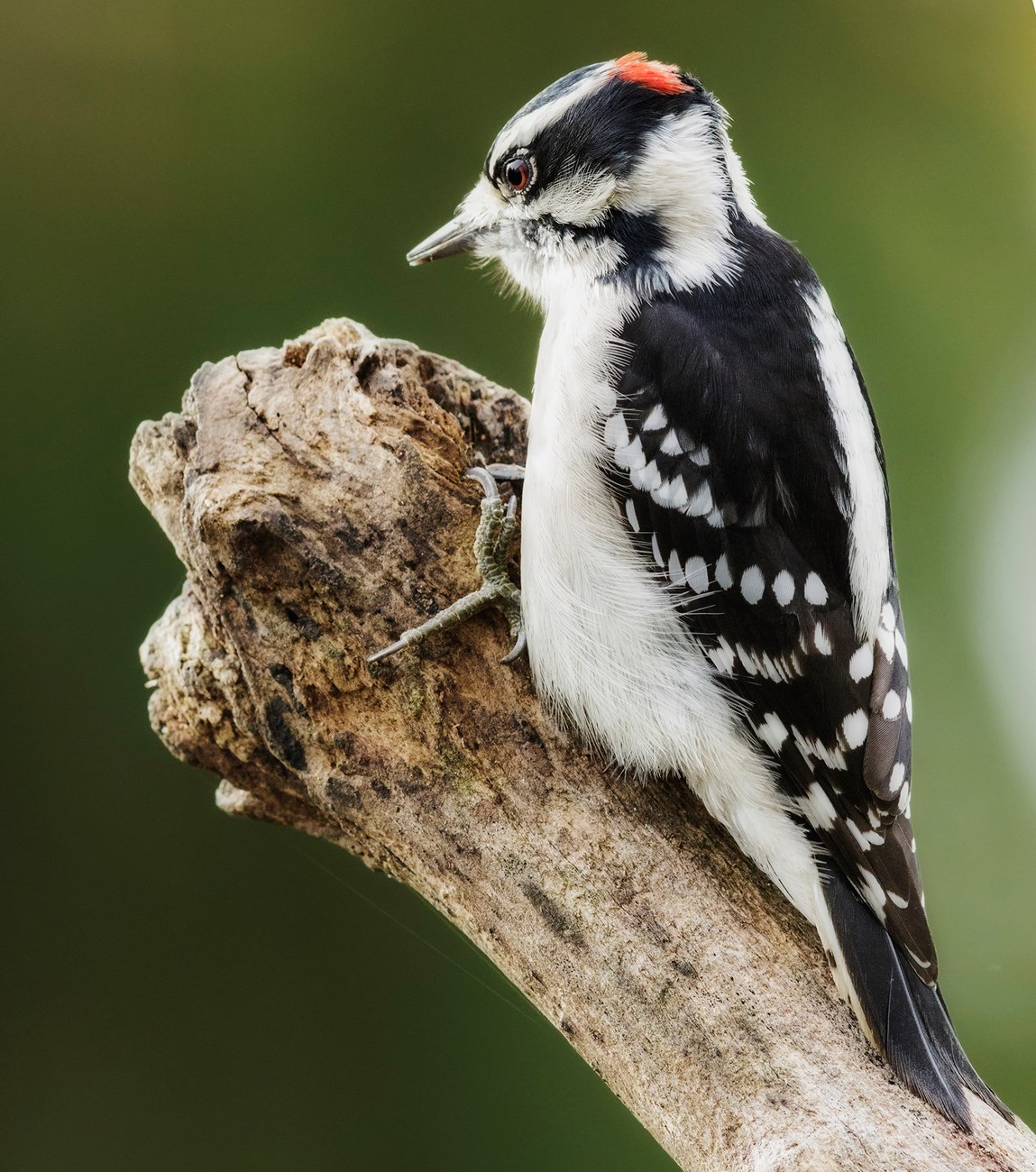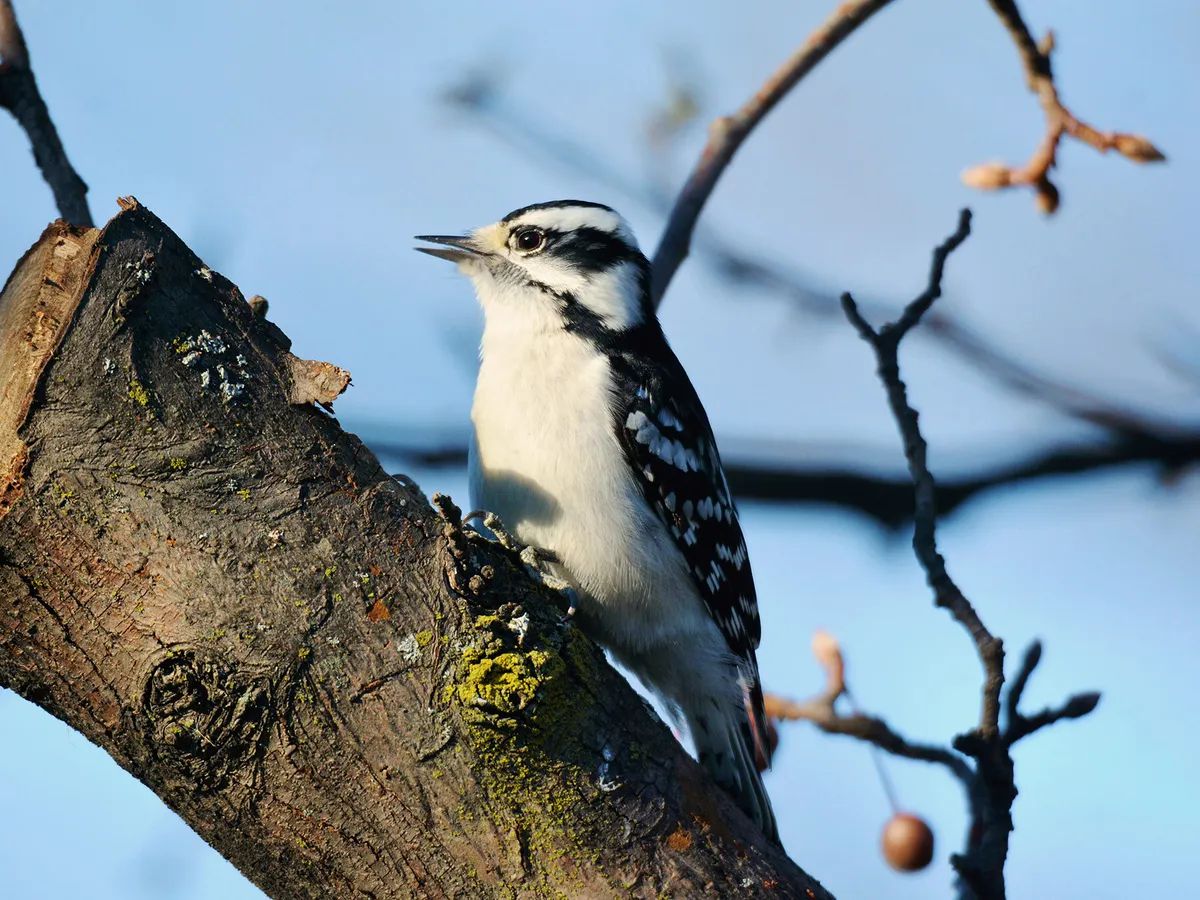Downy Woodpecker: The Delicate Drummer of the Forest

The Downy Woodpecker, a small and charismatic bird native to North America, enchants observers with its distinctive appearance and rhythmic drumming in the forest. Despite its petite size, this woodpecker possesses a remarkable set of skills and adaptations that enable it to thrive in various habitats across the continent.
Scientifically known as Picoides pubescens, the Downy Woodpecker is the smallest woodpecker species in North America, measuring around 6 to 7 inches (15 to 18 centimeters) in length. Its black and white plumage, similar to that of its larger relative, the Hairy Woodpecker, makes it easily recognizable. However, a closer look reveals subtle differences—a Downy Woodpecker has a shorter bill, a black patch on its white outer tail feathers, and a tiny tuft of feathers atop its head.

This woodpecker’s habitat spans a wide range of environments, including forests, woodlands, parks, and even suburban areas. It is adaptable and can be found across the United States and Canada. Despite its widespread distribution, the Downy Woodpecker is often elusive, blending seamlessly into its surroundings with its cryptic coloration.
One of the most remarkable features of the Downy Woodpecker is its drumming behavior. By rapidly pecking on trees or other resonant surfaces, it creates a series of distinctive, rhythmic beats. This drumming serves multiple purposes, including communication, establishing territory, and attracting mates. Each individual has a unique drumming pattern, allowing them to recognize one another and communicate effectively.

While drumming is a prominent behavior, the Downy Woodpecker also uses its sturdy bill for foraging. It searches for insects, larvae, and other invertebrates hidden beneath the bark of trees, probing crevices and excavating small holes to access its prey. In addition to insects, it feeds on seeds, berries, and sap, displaying a diverse diet that ensures its survival in different seasons.
The Downy Woodpecker’s nesting habits are equally fascinating. It excavates nest cavities in dead or decaying trees, using its bill to chisel away the wood and create a cozy shelter. The entrance hole is just large enough for the woodpecker to enter and exit comfortably. Within the nest cavity, the female lays a clutch of four to five white eggs, which are incubated by both parents. After hatching, the young woodpeckers remain in the nest, relying on their parents for food and protection until they fledge and venture into the world.

The presence of Downy Woodpeckers in an ecosystem brings numerous benefits. Their foraging activities help control insect populations, contributing to the overall health of forests and woodlands. Furthermore, their nest cavities provide crucial nesting sites for other bird species, such as chickadees and nuthatches, as well as shelter for small mammals.
Encountering a Downy Woodpecker in the wild is a delight for birdwatchers and nature enthusiasts. Its distinctive call, a short “pik” or “tik,” often precedes its appearance, alerting observers to its presence. Patient observers may witness its acrobatic maneuvers on tree trunks and branches, as it searches for food or communicates with its companions.

As with many bird species, the Downy Woodpecker faces various challenges, including habitat loss and fragmentation. Protecting and preserving forests and woodlands is essential for its long-term survival. Providing suitable nest boxes and maintaining trees with deadwood can also support the woodpecker’s nesting and foraging needs.
The Downy Woodpecker’s contribution to the ecological balance and its captivating presence in nature make it a cherished species. Its resilience, adaptability, and distinctive drumming serve as a reminder of the wonders found within our forests and the importance of preserving them for future generations to enjoy.



